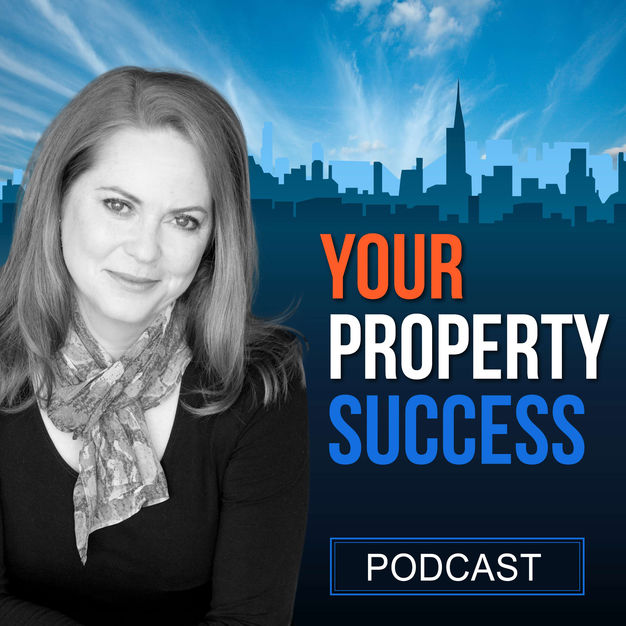
Everyday Property Investing: Property investment education and information
Kaz Young | Property Investing and Real estate investment education and advice
Are you looking to increase your knowledge about property investment but don’t know where to start? Everyday Property Investing is about everyday people achieving extraordinary things! Our mission is to empower everyday people to achieve wealth and financial freedom through property investing. We are real people, sharing real estate investment education, knowledge and experiences with the aim of achieving success. We aim to increase your knowledge on real estate investing in an interesting, entertaining and relevant manner!
- EPI157 | Residential Investment Strategies – Buy and Hold for Capital Growth
Property Investing Strategy – Part 2
Buy and Hold for Capital Growth
- Aim is to hold property that grows in value over time
- Example
- Property purchased in Sep 2019 for clients in Cannon Hill, Brisbane
- Purchase price $730,000
- Rental yield was approx 4.4% (based on 100%LVR) so would have been negatively geared
- No renovations or alterations undertaken
- Current estimated value is $1.1m
- $370,000 increase in value (50%) in 3 years
- Timing here was very fortunate as purchased just a couple of years prior to huge growth cycle
- Expectations around growth – what is realistic, what is good? This example is not indicative of every purchase.
- Aiming for areas that have high capital growth
- Often negatively geared
Why use this strategy?- Access equity to purchase another investment
- Rent- investors can sell to help them buy an upgraded home they could otherwise afford
- Park money and earn more than you might if you left money in the bank
- The biggest reason is to build wealth to support or supplement retirement.
- 3 ways to do that
- Build equity sell some down
- Pay off some and live off of rental income (?difficult)
- Sell all and put funds into another investment vehicle that supports retirement
- 3 ways to do that
- Financial planners want to see $1.2 million nett in cash for retirement if your aim is to earn circa $60K pa in retirement
How is high growth buy and hold achieved- Comes down to area selection
- Asset selection
- Meeting the growth fundamentals for the type of property you are purchasing.
- Criteria for a house will be different to a townhouse, apartments etc
How to maximise asset selection for growthLocation
- Infrastructure projects – transport, healthcare, university, community facilities, large shopping chains (e.g. bunnings)
- Transport corridors
- School catchments
- Population growth
- Shopping precincts closeby
- Ripple suburbs – income growth, gentrification, cafe culture
- Historic Growth – discuss
- Water
Property
- Features that suit the demographic
- Land size
- Yard
- Kitchen
- Outdoor entertaining
- Good floorplan
- Light and bright
- Low maintenance – flat block, simple garden
- Well maintained
- Owner occupier and rental appeal
Pros and Cons of this strategy – buy and hold for Capital Growth- Pros
- Builds wealth
- With a big upswing in growth can make a lot of money
- Losses offset taxable income
- Capital growth has a compounding effect, so the sooner you get into the market the more gains you will enjoy
- Excellent passive strategy (Less moving parts. Less project mgt)
- Accessible to most people (ie – developing might not be for some people, whereas this is)
- Types of properties and areas that are typical for this strategy are usually acceptable by banks with 90-95% LVRS often possible depending on the individuals circumstances
- If held long enough, very forgiving
- Lower risk (when fundamentals followed) than other strategies
- SMSF friendly
- Cons
- Losing money so need to be able to sustain that (ie require spare cash to be able to cover the shortfall between the rent and outgoings)
- Limited capacity to repeat depending on available disposable income
- Interest rate hikes can make holding properties difficult
- Forecast growth is not guaranteed, based on speculation
What’s next
In the upcoming episode we’ll look at positive cashflow property.
The post EPI157 | Residential Investment Strategies – Buy and Hold for Capital Growth appeared first on Everyday Property Investing.
20 April 2023, 4:07 am - EPI156 | The how, why and what of property investing strategy
Property Investing Strategy – Part 1
The how, why and what of property investing strategy
Overview – Goal/purpose vs Mechanics
-
- All property strategies aim for one or both of the following
- Capital Growth
- Income/yield
- How we achieve these outcomes is where the mechanics of a strategy come in:
- Buy and Hold
- Positive Cashflow
- Renovation
- Development – DA, strata title, subdivision, building
- Rooming accommodation
- Short Term accommodation
- Often various strategies may be combined within the one project – e.g. subdivision/renovation/building
- All property strategies aim for one or both of the following
Why is choosing a property strategy important when people start out investing?
Start with the end in mind
-
- Having a strategy allows you to choose a state, region, suburb and property,
- Without a strategy you have no criteria to determine if a property is good for you personally
- Many good properties, but if they don’t fit the strategy it isn’t a good property for you
Is there one best strategy everyone should follow?
What are some of the mistakes people make when choosing a property strategy?
-
- Not understanding when and why to use certain strategies
- Choosing a strategy that is exciting, popular at the time but doesn’t link to the investors goals or investor situation
- Choosing high risk strategies with only positive expectations (ie not considering or understanding the risks)
- Thinking you have to do just one thing
- Thinking one strategy is going to be perfect
What do people need to consider when choosing a property strategy?
-
- Finances (what you have yourself or can access via bank or other methods)
- Cashflow required to hold the property
- Time frame
- Risks & risk profile
- Back up plans
- Personal strengths and weaknesses
- Negative gearing is not an investment strategy – it is a by product of investing
- Negative gearing (note: it’s not a ‘strategy’) – What is it, pros, cons
- Pro – better locations – tenant demographics, capital growth
- Pro – tax advantages
- Con – making a loss
- Con – can only do this so much before no serviceability
- Positive gearing – What is it, pros and cons
- Pro – Not making a loss!
- Pro – Maintains (or potentially improves) serviceability, so more sustainable
- Pro – can use the excess income to pay down the property or invest in others
- Con – pay tax on income (I don’t really see that as a con)
- Con – usually regional or outer suburbs – tenant demographics, lower growth
- Con – hard to find
- Con – if only slightly then would need a lot of them
- Negative gearing (note: it’s not a ‘strategy’) – What is it, pros, cons
What’s next
In the upcoming we’ll address each of the various strategies in more detail and talk to some experts and investors out there using these.
The post EPI156 | The how, why and what of property investing strategy appeared first on Everyday Property Investing.
18 November 2022, 4:37 am -
- EPI155 | Selecting a Property Manager
Selecting a property manager
Selecting a Property manager to interview- Ask for referrals – BA, other investors
- Google reviews
- Look at the website – is it modern, updated, review staff profiles
Interviewing
- How many rentals does the agency manage
- how many staff and their experience
- How many rentals per manager – around 100 – 120 per staff member
- How involved is the principal in the property management
- Do you have an assistant or do you handle everything from start to finish
- How long have you been a property manager?
- How long have you been working for that office?
- Processes:
-
- Rental arrears:
- Process on rental arrears
- % of current tenants in arrears on rent and invoicing
- Process around routines, are they done in-house or outsourced
- Process around maintenance
- Give them some scenarios – if a tenant is 8 days behind what do you do? Will you contact me?
- Rental arrears:
- Fees and charges
-
- Investment property earning $650pw rent
- 8% fee – $52 ($7.50 difference)
- 7% fee – $45.50 ($6.50 difference)
- 6% fee – $39
- Investment property earning $650pw rent
- Go with your gut – if you don’t have a good feeling on the phone
- Judge them on their communication and responsiveness during the ‘courtship’ phase
- A word on self management
The post EPI155 | Selecting a Property Manager appeared first on Everyday Property Investing.
14 September 2022, 11:15 pm - EPI 154 | Challenges with Property Management
Challenges with Property management
In this podcast episode we discuss some of the challenges experienced with property management, including:
- Communication
- Not responsive to emails
- Doesn’t return calls
- Large rent roll
- Portfolio – Pod – Task based
- Not enough staff
- Low fees vs Good Service
- Change of managers
- Replace with juniors or lower quality
- Bounce around between managers – no consistency (staff turn over)
- BDM bait and switch
- Management of maintenance
- Not reporting maintenance
- Maintenance approved but not actioned
- Management of tenants
- Routines not on time
- Not keeping tenant to acceptable standard
- Reactive management rather than proactive management
- Constantly having to follow up the manager for routines, maintenance,
- anything!
The post EPI 154 | Challenges with Property Management appeared first on Everyday Property Investing.
31 August 2022, 11:10 pm - Communication
- EPI 153 | Nuances of negotiation – part II – what can go wrong
The Nuances and negotiation – part II
In this follow up negotiation episode Kaz and Lisa discuss three things that can go wrong in negotiation and how to avoid these things.
- Death by solicitor
- Distrust of agents and agents colluding
- Getting it too easy
The post EPI 153 | Nuances of negotiation – part II – what can go wrong appeared first on Everyday Property Investing.
10 August 2022, 11:04 pm - EPI 152 | Nuances of negotiation – part I
The Nuances and negotiation – part 1
Lisa Parker and Kaz Young have learnt a few things over years as professional buyers agents. In this episode they are important tips for successful negotiations. Tackling more than just the standard rules and strategies, they talk about the subtleties of negotiating in part 1 of this discussion.
A lot of people are involved in the negotiation process. Not just vendors and buyer. Agent, buyer agent, lawyers, family members (especially when it is a deceased estate or elderly moving into care).
- Determine the priorities of other parties and impact of these
- Look for a Win/win where possible
- Don’t let it be personal
- Be the preferred buyer
- Don’t sweat the small stuff
The post EPI 152 | Nuances of negotiation – part I appeared first on Everyday Property Investing.
3 August 2022, 11:30 pm - EPI 151 | Rental reforms for property investors
Rental Reforms for Property Investors
Changes to rental legislation in Victoria are now around 12 months old. These changes to the responsibilities of tenants and owners have had a significant impact on investors and in this episode we speak with Megan Stuart, from Mint Property Management to outline the legislative changes and their impact. With similar legislation having rolled out or being implemented in other states, this discussion is relevant for all property investors.
The post EPI 151 | Rental reforms for property investors appeared first on Everyday Property Investing.
26 July 2022, 7:09 am - EPI 150 | Property Development – Justin Gehde
Property Developer – Justin Gehde
In this episode, Kaz interviews long time Everyday Property Investing listener and Property Developer, Justin Gehde about his journey into the world of Property Development, including the pros and cons of developing and what it takes to be a good property developer.
Learn more about Property Development
Check out Justin’s podcast and property developer training course:
Other related podcasts
You can also checkout episodes 25,26 and 27 with Troy Harris where we covered property development.
The post EPI 150 | Property Development – Justin Gehde appeared first on Everyday Property Investing.
13 July 2022, 11:30 pm - EPI 149 | Stamp Duty Reforms – What do they mean?
What is stamp duty?
(From Business.gov.au)
Stamp duty is a tax that state and territory governments for certain documents and transactions such as:- Vehicle registrations and transfers
- Insurance policies
- Leases and mortgages
- Hire purchase agreements
- Transfers of property (business, real estate, some shares)
With respect to stamp duty on a property purchase this is usually paid in a lump sum up front by the buyer as part of the transaction so it forms a big ticket cost item that buyers have to have ready and available in order to purchase. Typically, as a purchase cost, it’s not part of a home loan and so this large sum really eats into the deposit funds of buyers and so impacts on affordability of housing and makes it more difficult for homeowners to move.
The amount is dependent upon the transaction and also the state or territory in which the transaction takes place but to give you an idea – for an investment property purchase of $800,000 with the average cost being around $35k. It represents around 25% – 28% or so of state taxes collected and so is a big ticket income provider for state governments also. Note that there are often concessions available for some groups, for example, home buyers, first home buyers.
What are the proposed reforms?
Housing affordability is a big ticket item and always is. The reason this has become topical is that the NSW State Government has proposed changes to the way stamp funds are collected to potentially, improve housing affordability. The actual proposed changes are that first home buyers, buying a property under $1.5m would be given the choice to either: Pay stamp duty up front OR to pay an annual property tax over on an ongoing basis.
First home buyers will pay an annual property rate of $400 plus 0.3 per cent of the land value of the property each year.
Eg land value $500K = $1900 paInvestors – $1,500 plus 1.1 per cent of land value for investment properties.
Eg Land value $500K = $7,000 annual taxYou can read more about the specifics of this proposed change on the NSW state government website.
How will this change impact?
It is likely that this would roll out across all states over time. Also likely that this would be extended to all home buyers and to investors.
Pros
- Help first home buyers
- Reduce transaction upfront costs
- Encourages transactions rather than making a barrier
- May encourage downsizing to apartments (because the land value is lower, therefore the annual tax would be lower and price points will be under the $1.5m threshold)
- More opportunity for flipping as transaction costs are lower, improving profitability
- A more predictable and stable tax over time for government
- Opportunity for developers and renovators to cater to the market and win
- Investors could follow the roll out around the state if an investor who flips – buy unrenovated, renovate for target market, this sector of market should see upward growth in short period, investors have a window to capitalise
Cons and potential threats
- If you hold the property long term then it could become more expensive than the upfront tax as it’s a ‘forever tax’
- The amount would be increased over time with indexation and increased land value of property
- Older homeowners with little income (e.g. pensioners) may struggle with this increasing and ongoing tax
- If you stay in a property long term and continue to pay this tax you would be significantly behind compared to the current lump sum scheme.
The post EPI 149 | Stamp Duty Reforms – What do they mean? appeared first on Everyday Property Investing.
7 July 2022, 4:14 am - EPI 148 | Taking charge of your property journey
Are you one of the many people who have always planned to invest in property but for some reason just never quite got going? Or perhaps one of the many people who maybe purchased one investment property and had great plans to build that portfolio but just….got busy?
Then this is the episode for you! In this episode we’re going to talk about how to take charge of your property journey. Lisa and Kaz talk about getting clear on your property goals, identifying barriers and how to overcome them.
The post EPI 148 | Taking charge of your property journey appeared first on Everyday Property Investing.
20 June 2022, 10:03 pm - More Episodes? Get the App
Your feedback is valuable to us. Should you encounter any bugs, glitches, lack of functionality or other problems, please email us on [email protected] or join Moon.FM Telegram Group where you can talk directly to the dev team who are happy to answer any queries.
 Property Investment Podcast Network
Property Investment Podcast Network
 Your Property Success Podcast
Your Property Success Podcast
 Property Investing Insights with Right Property Group
Property Investing Insights with Right Property Group
 Property Podcast
Property Podcast
 Real Estate Talk |
Real Estate Talk |
 On Property Podcast
On Property Podcast